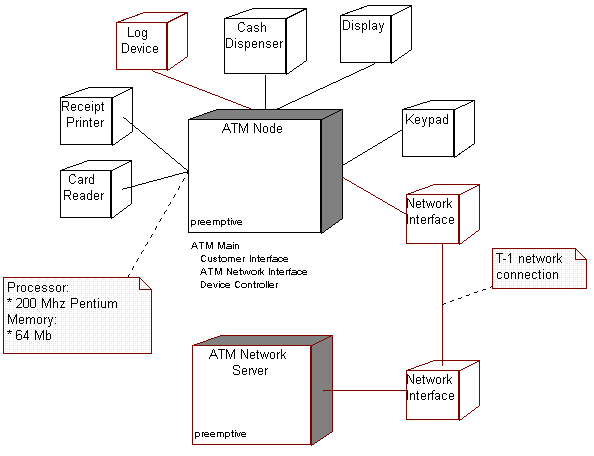 Roles and Activities >
Roles and Activities >
 Developer Role Set >
Developer Role Set >
 Software Architect >
Software Architect >
 Describe Distribution
Describe Distribution
 Roles and Activities >
Roles and Activities >
 Developer Role Set >
Developer Role Set >
 Software Architect >
Software Architect >
 Describe Distribution
Describe Distribution
Activity:
| ||||||||||||||||||
Purpose
|
|
| Steps | |
| Input Artifacts: | Resulting Artifacts: |
| Role: Software Architect | |
| Concepts: | |
| Tool Mentor: | |
| Workflow Details: |
The distribution of processes across two or more nodes requires a closer examination of the patterns of inter-process communication in the system. Often, there is a naïve perception that distribution of processing can ‘off-load’ work from one machine onto a second. In practice, the additional inter-process communication workload can easily negate any gains made from workload distribution if the process and node boundaries are not considered carefully.
Distribution is one area where the sum can be, and usually is, less than the sum of the parts. Achieving real benefits to distribution requires work and careful planning.
Nevertheless, there are many cases where the system workload cannot be handled by one processor. This can be due to special processing requirements, as in the case of digital signal processing, which may require specialized and dedicated processors. It may also result from inherent scaling concerns, where the large numbers of concurrent users are simply too many to support on any single processor, or it may result from economic concerns, where the price performance of smaller, cheaper processors cannot be matched in larger models.
Purpose
|
The topology of the network and the capabilities and characteristics of the processors and devices on the network will determine the nature and degree of distribution possible in the system.
The following information needs to be captured:
Example
The following diagram illustrates the Deployment View for the ATM

Deployment View for the ATM
The diagram illustrates two Nodes (the ATM itself, which is the focus of this example), and the ATM Network Server, through which all connections to the inter-bank network are made. Though the ATM Network Server is out of scope for the builders of the ATM, we show it here to illustrate how network bandwidth can be documented. The diagram also shows the processes and threads which execute on the ATM Node, which are discussed in the next step Allocate processes to nodes.
Note the use of annotation to document processor and network capacity. Such documentation can also be presented in the documentation fields of the Node (or the devices), in which case it is not displayed in the diagram.
Purpose
|
Processes should be allocated to nodes so as to minimize the amount of cross-network traffic; processes which interact to a great degree should be co-located on the same node; processes which interact less frequently can reside on different nodes. The crucial decision, and one that sometimes requires iteration, is where to draw the line.
Allocation takes into account:
Example
The previous example diagram, the Deployment View for
the ATM, illustrates for the ATM Node the allocation of processes onto
the node. There is a single process (ATM Main), which in turn consists of three
separate threads of control (Customer Interface, ATM Network Interface, and
Device Controller).
|
Rational Unified
Process
|